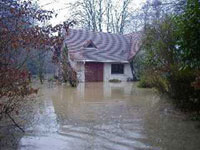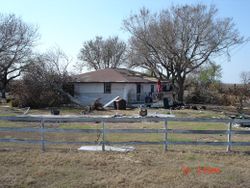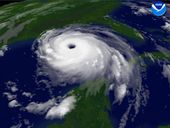|
The Founder of MIUSA went through the horror of the Katrina Storm wondering where his family two brothers and four sisters and their families were. Wondering if they made it out alive. After nearly four weeks, things turned out to the good. They all made it out alive. After their return to the area one of his sisters stated, " The smell is horrible here and the water we cannot drink."Their homes were in need of something to help out with cleaning the air. They needed water purifiers,air purifiers, and most of all proper mold inspections and remediation | ||||||
Hurricane Katrina was the costliest and one of the deadliest hurricanes in American history.
It was the eleventh named storm, fifth hurricane, third major hurricane,
and second Category
5 hurricane of the 2005
Atlantic hurricane season, and was the sixth-strongest Atlantic
hurricane ever recorded.Katrina formed over the Bahamas on August
23, 2005,
and crossed southern Florida as a moderate Category
1 hurricane before strengthening rapidly in the Gulf of Mexico and becoming, at that time, the strongest hurricane ever recorded in the
Gulf. The storm weakened considerably before making its second landfall
as a Category 3 storm on the morning of August 29 in southeast
Louisiana. It is possible that Katrina was the largest hurricane of its strength
to approach the United States in recorded history; its sheer size caused
devastation over 100 miles from the center. The storm surge caused major
or catastrophic damage along the coastlines of Louisiana, Mississippi, and Alabama,
including the cities of Mobile, Alabama, Biloxi and Gulfport,
Mississippi, and Slidell,
Louisiana. Levees separating Lake
Pontchartrain from New Orleans,
Louisiana were breached by the surge, ultimately flooding roughly
80% of the city and many areas of neighboring parishes. Severe wind
damage was reported well inland. Katrina is estimated to be responsible
for $75 billion (2005 US dollars) in
damages, making it the costliest hurricane in U.S. history. The storm
has killed at least 1,604 people, making it the deadliest U.S. hurricane
since the 1928. The Holleyman Bird Sanctuary is located in the community, and is
south of the Sabine
National Wildlife Refuge. Johnson's Bayou is home to four natural gas pipelines. A house in Johnsons Bayou destroyed by Hurricane
Rita Hurricane Rita on September 24, 2005. With Florida hit by seven hurricanes in 13 months and the Gulf states
by two major storms in three weeks, residents and business owners have
been struggling with rampant mold growth due to water intrusion from
rain or flooding. Unfortunately, just cleaning mold may not be enough to
keep it from regrowing, especially if humidity levels remain high, as is
the case in the southeastern U.S.
 Then came Rita, sticking the South West Louisiana Area where his son and grandchildren live. All this took a toll on the mind of the directors of MIUSA. They became determined to locate anything that would help in the future with the effects of dangerous molds. A school was set in place prior to the hurricanes with much preparation. All hands are on deck to educate the American people and prepare them on how to protect themselves from dangerous molds prior and after any disaster.
Then came Rita, sticking the South West Louisiana Area where his son and grandchildren live. All this took a toll on the mind of the directors of MIUSA. They became determined to locate anything that would help in the future with the effects of dangerous molds. A school was set in place prior to the hurricanes with much preparation. All hands are on deck to educate the American people and prepare them on how to protect themselves from dangerous molds prior and after any disaster.
 Johnson's
Bayou is a small community on the Gulf
Coast in Cameron
Parish, Louisiana, United States,
named after Daniel Johnson, who came to the area in around 1790. It is located on
Louisiana Highway 82, 12 miles west of Holly
Beach, and 28 miles southeast, across the Sabine Pass channel,
of Port Arthur,
Texas.
Johnson's
Bayou is a small community on the Gulf
Coast in Cameron
Parish, Louisiana, United States,
named after Daniel Johnson, who came to the area in around 1790. It is located on
Louisiana Highway 82, 12 miles west of Holly
Beach, and 28 miles southeast, across the Sabine Pass channel,
of Port Arthur,
Texas.
Mold spores are found
everywhere in our environment - indoors and out - with over 1000 species
of mold in the United States alone. Outdoors, molds play an important
role in nature by breaking down organic matter such as downed trees and
fallen leaves, and we would not have some foods or medicines such as
cheese or penicillin without molds. However, indoor mold growth should
be avoided.
Mold can grow on virtually any surface as long as
moisture, oxygen and an organic source are present. It can grow without
sunlight and needs only moisture and the right temperature.
While the adverse effects of mold on public health are the
subject of debate and research, it does present a serious problem for
people who have respiratory problems such as allergies or asthma and
immune-compromised individuals. Children and the elderly also may be at
higher risk for adverse health effects from mold.
A number of
newspapers across the south have reported that residents have returned
to their homes and businesses after the recent hurricanes to find
rampant mold growth due to floodwater and/or rain entering the structure
due to wind damage. Mold can take hold within 24 to 48 hours after water
damage occurs and without power and continuing high humidity, it can
multiply rapidly, destroying materials such as drywall, wood, and
fabrics.
Environmental specialists recommend cleaning and drying
out properties as soon as possible to minimize mold growth. If the
damage is extensive, the use of professional mold-remediation
specialists is recommended. For insurance purposes, take photographs of
damages prior to beginning clean up. However, it should be noted that
many insurance policies either exclude or limit damages regarding mold
infestation. This makes it important to begin clean up as soon as
possible. The Federal Emergency Management Agency (FEMA) and the
Environmental Protection Agency (EPA) recommend removing all porous
materials such as carpets, padding, ceiling tiles, drywall to at least
12 inches above the water line, insulation, paper and wood products from
the structure. Allow the water- damaged areas to dry for two or three
days. It is important to note that the sources of water infiltration,
such as roof, wall or window damage, must be repaired to insure against
additional moisture-related problems.
Use caution when cleaning and handling mold-contaminated materials as spores are easily released. Wear protective clothing, gloves and consider wearing a mask or respirator. Hard materials such as metal, plastic, glass or tile should be cleaned. Wall studs, sub-flooring, woodwork and concrete slabs must be cleaned before any reconstruction or remodeling. After cleaning and rinsing, disinfect the area with a solution of an EPA approved disinfectant. Do not use bleach to clean EVER. Air conditioners, fans and dehumidifiers can be used when power is restored to help dry areas after cleaning.
After all cleaned areas are dry, a mold and mildew preventative may be applied to most surfaces to prevent the re-growth of mold. There are several EPA approved products that have been extensively tested, both in the laboratory and in the field, and is EPA registered. Many dry clear and provides a protective film with long-term residual mold prevention capabilities. Interior. As with cleaning products, wear protective gear and carefully follow directions
In September 2003, the village of Black Rock, located on the Chowan River in eastern North Carolina, was devastated by a 12-foot storm surge generated by Hurricane Isabel. An approved EPA product was supplied to the community and was used extensively in the recovery process.
For detailed information
on cleaning mold and storm remediation, visit www.epa.gov/mold or www.fema.gov.


